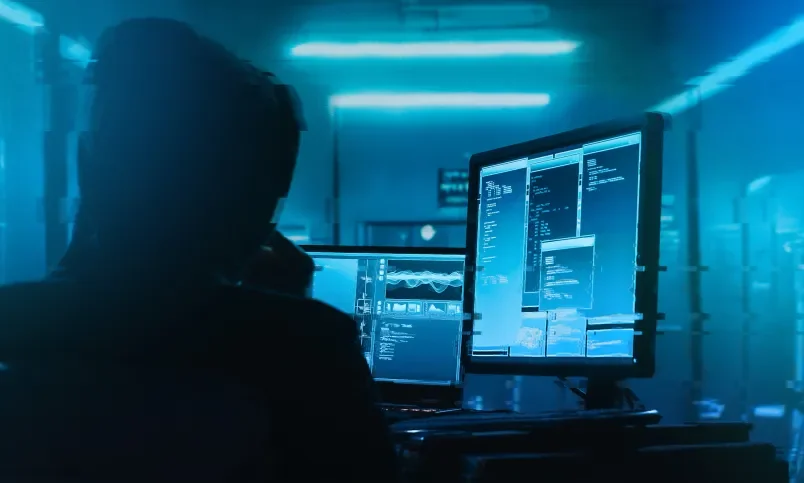Ever wondered who’s really behind those relentless cyber incidents making the headlines? If you work in cybersecurity, IT, or just want to finally untangle terms like “hacker,” “cybercriminal,” and “threat actor,” this deep-dive breaks it all down. You’ll learn what a threat actor is (with clear examples), what motivates them, how to spot their techniques, and how to keep your organization a step ahead.
Spoiler alert: It involves more than just yelling at suspicious emails.
What is a threat actor?
A threat actor is any individual, group, or entity that intentionally carries out actions that could cause harm to digital systems, data, or networks.
In cybersecurity, threat actors are responsible for orchestrating cyberattacks—for profit, espionage, disruption, or to push ideological agendas.
Going beyond the surface of what a threat actor is
At its core, a threat actor isn’t just a random “bad guy in a hoodie” or generic hacker. A threat actor can be a person, a criminal group, a government agency, or even a network of bots. The connecting thread? INTENT. Every threat actor acts on specific objectives. Maybe they want to steal millions, disrupt elections, leak sensitive files, or just prove a point for bragging rights.
Don’t forget that some threat actors use automated helpers (think botnets or malware droppers) and that these digital “minions” are always controlled by humans with a plan.
Quick recap:
Threat actors are intentional, goal-driven, and sometimes scarily persistent
They can be lone wolves or highly organized groups
They often act from the shadows, but patterns emerge when you know what to look for
Sorting the types of threat actors
How do you actually classify a threat actor? Here’s a handy cheat sheet:
Nation-state actors
These are government-backed or state-sponsored groups with deep pockets and even deeper patience. Think months (or years!) of planning to infiltrate a target. Their main goals? Political advantage, industrial espionage, and national security.
Cybercriminals
Financially motivated and always on the hunt for a quick (or not-so-quick) payday. They target businesses and individuals with ransomware, banking trojans, and every scam under the sun.
Insiders
Sometimes the biggest threat comes from within. Insiders are people with legitimate access (employees, contractors, partners) who could leak data or purposely sabotage systems. Sometimes it’s spite, sometimes it’s money, and sometimes it’s plain negligence.
Hacktivists
These actors are driven by political or social beliefs. Their weapon of choice? Defacements, DDoS campaigns, and data dumps aimed at embarrassing or disrupting organizations.
Still fuzzy on the nuances? Review all types of threat actors for a deeper breakdown.
Threat actor vs hacker is not the same (but sometimes overlap)
There’s a misconception that “threat actor” and “hacker” are interchangeable. Not quite:
Hacker: Broad term including both “ethical” and “malicious” hackers. Think of them as the “engineers” of cyberspace.
Threat actor: You must have malicious intent. If you’re probing a network to break in, plant malware, or steal data, you’re a threat actor. If you’re running a pen test to defend a system? You’re a hacker, but not a threat actor.
Bottom line? All threat actors “hack” in some form, but not all hackers are threat actors. This is an actual cybersecurity Venn diagram moment.
Anatomy of a threat actor
Here’s how to identify these digital troublemakers:
They’re motivated (for money, power, revenge, or notoriety)
They don’t give up easily and are often stealthy
They can be tightly organized (nation-states/cyber mafias) or lone wolves
They’re opportunistic (“oh look, an open RDP port!”) and targeted (devoting months of recon)
Tactics, Techniques, and Procedures (TTPs) are their bread and butter
Threat actor motivations
Sure, money talks. But it’s not always about cash. Motivations include:
Financial gain: Ransomware payouts, credit card fraud, selling data on the dark web
Espionage: Stealing intellectual property or state secrets for advantage
Disruption: Taking down critical infrastructure, government services, or public utilities
Politics/ideology: Leaking docs for “the greater good” or supporting a cause
Revenge: Got passed over for a promotion? Some disgruntled insiders want payback
Motivation shapes everything—from the targets they choose to the tools they use.
Tracking the shadows and identifying threat actors
Advanced threat actors don’t usually wave a red flag that says “it’s us!” (unless they want to). Threat hunters rely on:
Threat intelligence tools: Platforms that aggregate global data, highlight patterns, and map attack signatures
Attack signatures and TTPs: Many groups favor certain malware families, infrastructure, or attack scenarios. Analysts look for these fingerprints.
Indicators of Compromise (IOCs): Clues left behind, like IP addresses, file hashes, or domain names linked to known groups.
Attribution techniques: Analysts can profile attackers based on analysis of the code, the infrastructure used, or even time zones hinted at by activity windows.
It’s not just about “who did it?” but “how did they do it?” and “how can we stop them next time?”
Behind the scenes
It’s not “hack and hope.” Most campaigns follow a calculated plan:
Reconnaissance: Identify and research targets, gather public and private info.
Exploitation: Find and exploit vulnerabilities (unpatched software is their favorite snack).
Establish persistence: Set up ways to stay undetected (backdoors, rootkits).
Lateral movement: Move through networks, escalate privileges, and map environments.
Exfiltration or impact: Steal data, deploy ransomware, disrupt services, wipe evidence.
They automate what they can, improvise what they can’t, and iterate on what works.
Favorite playbook
You’ll see these attack methods again and again:
Phishing and spear-phishing: Deceptive emails targeting your users to snatch credentials
Social engineering: Trickery that preys on trust, curiosity, or fear
Credential stuffing: Testing stolen logins across sites, hoping for lazy users
Malware/ransomware: Dropping code that steals, locks, or deletes your data
Exploiting unpatched software: Hitting those “patch it later” systems ASAP
Zero-day attacks: Using unknown vulnerabilities for maximum effect
To help you better understand threat actors and how they operate, we've included an insightful video that dives deep into the topic. Check out the video here. This live session explains the different types of threat actors, their motivations, and the tactics they commonly use to breach security systems. Whether you're looking to identify potential vulnerabilities or bolster your defenses, this video provides practical advice and real-world examples to keep you one step ahead.
Signs you’re being watched
Want to play digital detective? Watch for:
Unusual spikes or patterns in network traffic
Odd logins or unauthorized access attempts, especially to sensitive areas
Traffic to known malicious IPs and domains (threat feeds help here)
Sudden, unexplained encryption of files (think ransomware strikes)
Weird user activity, especially if your CEO logs in from Antarctica at 3 a.m.
These aren’t always smoking guns, but they’re a good place to start.
Stay one step ahead, build a better defense today
Threat actors are relentless, but so is innovation in defense. The key is constant vigilance. Invest in strong threat intelligence, monitor for anomalies, stay patched, and educate your crew so they don’t fall for the next “urgent wire transfer” email. 👀
Remember, every step you take against threat actors makes your organization more resilient. Stay sharp and keep those digital doors locked tight.


Protect What Matters










